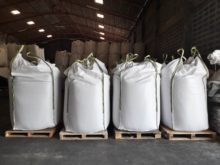Fertilizer storage
So, what are the basic rules for proper storage?
Fertilizer storage is one of the most important steps in order to guarantee a safe working environment and to maintain the properties unaffected.
It should also not be underestimated that inaccurate conservation of fertilizers can be one of the main sources of groundwater and surface water pollution.
How to store fertiliser safely
So, what are the basic rules for proper storage?
- Keep the place clean (paying attention to remove any product spills), ie floor, walls and various equipment cleaning
- Avoid machinery spills
- Avoid damaging fertilizer packages during handling
- Keep the distance from heating systems and possible sources of heat, such as fuel and oil barrels
- No smoking, welding, and use of open flames near the product.
One of the greatest dangers for product validity is hygroscopicity: fertilizers, in fact, easily absorb moisture. For this we recommend storage in a preferably closed and dry place and placed on platforms (ie. pallets).
Indoor storage
As we have just mentioned, the best storage practice involves placing the fertilizer in an enclosed building, preferably on platforms to avoid contact with soil moisture.
The place, in terms of respecting the fertilizer features and to ensure a safe workplace, should have the following characteristics:
- be flat, uniform and dry, free from holes or sharp objects (e.g. stones)
- be constructed with fireproof materials (or not-readily combustible materials)
- be well ventilated.
In addition, it is good to place fertilizer in bags at least one meter away from beams and eaves, as there may be a risk of instability and collapse. In case the fertilizer is packed in bags, it would be preferable to detach it also from walls and other heaps of fertilizers.
Outdoor storage
In the event that there is a storage outside and there is no possibility to store the product in a closed building, it is advisable to store the product by elevating it from the ground (e.g. using pallets), on a well-drained, smooth and dry surface. It is also advisable to cover the heaps with protective sheet and then tie them to the base.
Between the layer of platforms and the heap it would be ideal to use an additional cloth to prevent the deterioration of the product resulting from overheating.
For a safe storage
Whatever solution is adopted for the storage of fertilizer, we also recommend:
- keep track of incoming and outgoing fertilizers, keeping records
- Keep inventory up to date
- keep the warehouse clean
- make periodic checks of the products status
- avoid access by unauthorized persons
- comply with national provisions.
